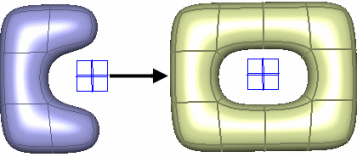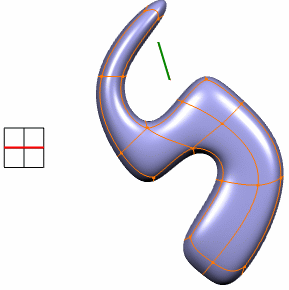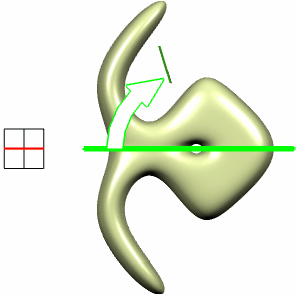More about Symmetry | ||||
|
| |||
General Information
This sub-topic gives you general information when performing a symmetry.
- The symmetry keeps the curvature continuity of the subdivision surface, therefore some details of the input mesh will be modified.
- As the result of the symmetry is a subdivision surface, you can perform a symmetry of a symmetry or copy-paste a symmetry or use this feature to associate other subdivision surfaces.
- If the face of the subdivision surface has only one vertex on the chosen side, the result of the symmetry is a mirror surface.
- The display of the projection plane depends on the option selected for transparency in Tools > Options > Display > Performance tab, Transparency Quality area, that is either Low (Screen Door) or High (Alpha Blending). For more information on these options, refer to CATIA Infrastructure User's Guide: Customizing: Customizing settings: Performance.
![]()
Shapes
This sub-topic explains how a symmetry is performed depending on the shape of the subdivision surface.
- If the surface is U-shaped, you cannot select a side as it is
automatically chosen:

- If the symmetry plane intersects a S-shaped surface, the symmetry
cannot be performed.
Below is an example using the green plane, the symmetry cannot be
performed:

Below is an example using the red plane: the symmetry can be performed.
